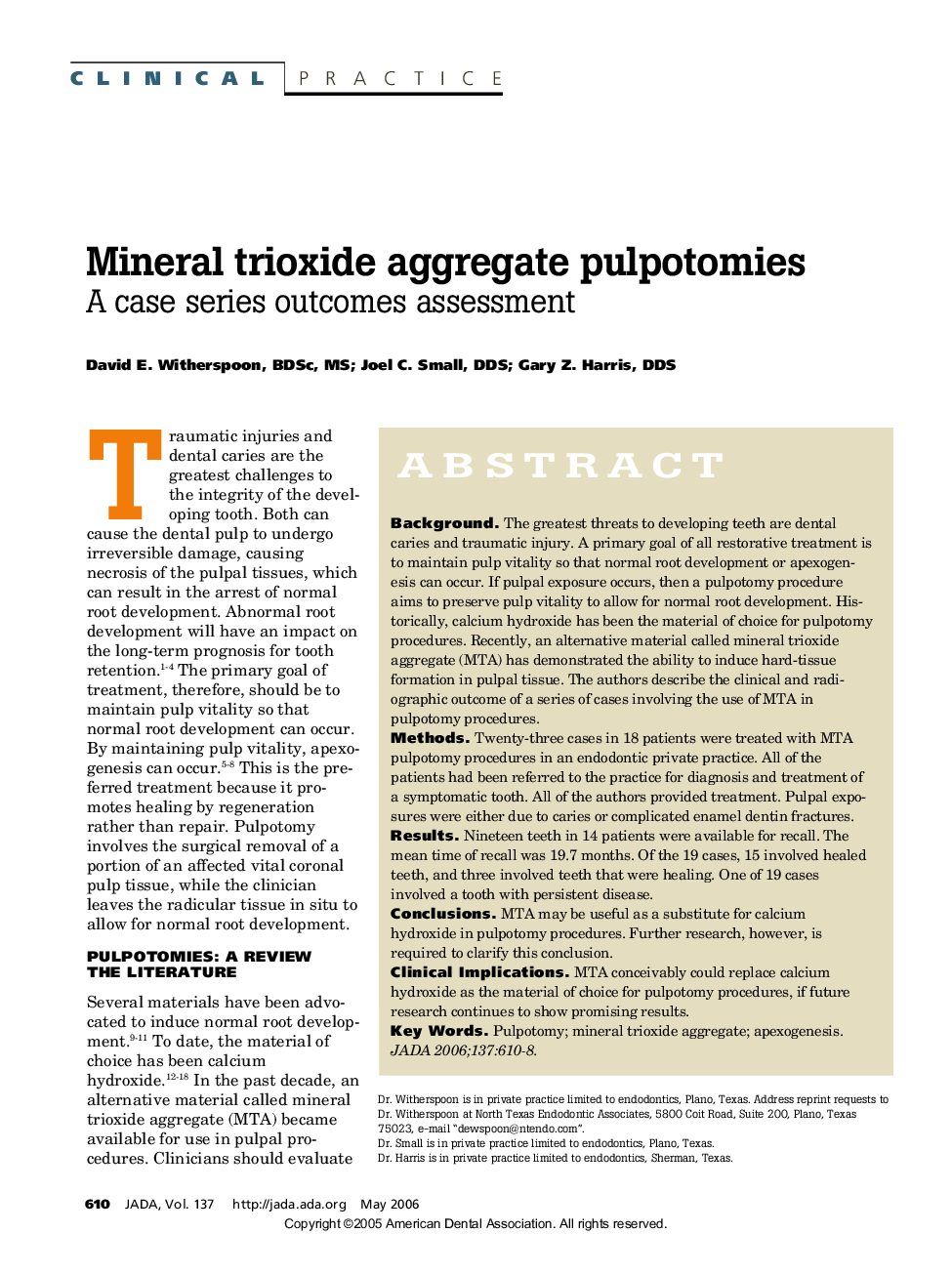| Article ID | Journal | Published Year | Pages | File Type |
|---|---|---|---|---|
| 3140651 | The Journal of the American Dental Association | 2006 | 9 Pages |
ABSTRACTBackgroundThe greatest threats to developing teeth are dental caries and traumatic injury. A primary goal of all restorative treatment is to maintain pulp vitality so that normal root development or apexogenesis can occur. If pulpal exposure occurs, then a pulpotomy procedure aims to preserve pulp vitality to allow for normal root development. Historically, calcium hydroxide has been the material of choice for pulpotomy procedures. Recently, an alternative material called mineral trioxide aggregate (MTA) has demonstrated the ability to induce hard-tissue formation in pulpal tissue. The authors describe the clinical and radiographic outcome of a series of cases involving the use of MTA in pulpotomy procedures.MethodsTwenty-three cases in 18 patients were treated with MTA pulpotomy procedures in an endodontic private practice. All of the patients had been referred to the practice for diagnosis and treatment of a symptomatic tooth. All of the authors provided treatment. Pulpal exposures were either due to caries or complicated enamel dentin fractures.ResultsNineteen teeth in 14 patients were available for recall. The mean time of recall was 19.7 months. Of the 19 cases, 15 involved healed teeth, and three involved teeth that were healing. One of 19 cases involved a tooth with persistent disease.ConclusionsMTA may be useful as a substitute for calcium hydroxide in pulpotomy procedures. Further research, however, is required to clarify this conclusion.Clinical ImplicationsMTA conceivably could replace calcium hydroxide as the material of choice for pulpotomy procedures, if future research continues to show promising results.
